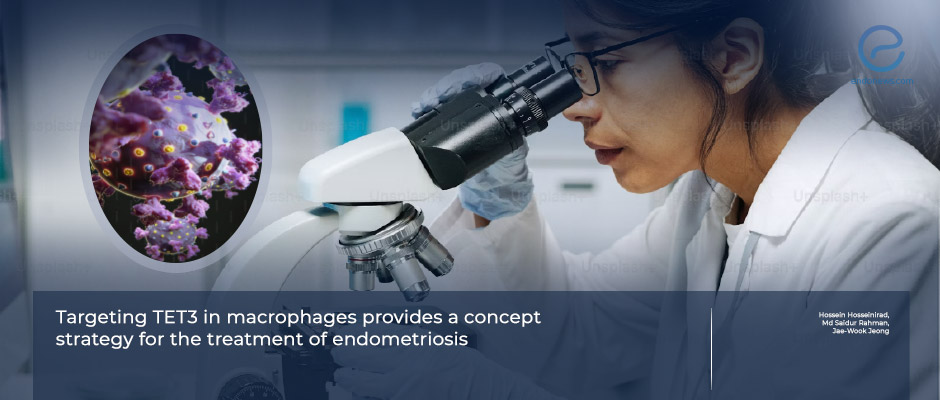TET3: A new target for endometriosis treatment
Jan 6, 2025
New insights into TET3's role in endometriosis and inflammation are discovered
Key Points
Highlight
- Ten-eleven translocation 3 (TET3), an enzyme involved in epigenetic regulation, is significantly overexpressed in macrophages within endometriotic lesions.
- TET3-overexpressing macrophages contribute to the chronic inflammatory environment of endometriosis.
Importance
- Macrophages are central to the development and persistence of endometriosis through their roles in inflammation, tissue remodeling, and immune evasion.
- Targeting TET3 offers a potential therapeutic strategy to reduce inflammation and halt disease progression in endometriosis.
What’s done here
- This is a commentary by Hosseinirad et al. discussing the findings of Lv et al.'s research study on TET3 in macrophages.
- The effects of TET3 inhibition are explored using a selective TET enzyme inhibitor (Bobcat339), in both human and mouse models.
Key results
- An eight-fold increase in TET3 expression was observed in macrophages from endometriotic lesions compared to healthy tissues.
- TET3 expression is upregulated by endometriosis-associated factors like TGF-β1 and MCP1.
- Bobcat339 induced macrophage apoptosis and reduced endometriosis progression in mice.
- Knockdown of TET3 altered pathways involved in cytokine signaling and apoptosis, reducing IL-6 levels and increasing pro-apoptotic gene expression.
Lay Summary
Macrophages have a critical role in the development of endometriosis. They are involved in inflammation and tissue repair and are recruited to endometriotic lesions, where they contribute to chronic inflammation.
In a recent commentary published in the Journal of Clinical Investigation, Hosseinirad et al. from Missouri, USA highlighted promising research on the role of a protein called ten-eleven translocation 3 (TET3) in endometriosis. They discuss the findings of the study by Lv et al. that shed light on how targeting TET3 in macrophages could open new therapeutic avenues for managing this challenging disease. In their study, Lv et al. found that macrophages in endometriotic tissue overexpress the enzyme TET3 compared to healthy tissue. This overexpression exacerbates inflammation by altering gene expression and promoting macrophage survival in the inflammatory environment of endometriosis.
It is emphasized that macrophages exposed to factors like TGF-β1 and MCP1—both elevated in women with endometriosis—show increased TET3 levels, which enhance their survival. It is further noted that the experimental drug Bobcat339, which inhibits TET3, effectively induces macrophage death and reduces endometriotic lesions in mice. In addition, RNA sequencing conducted after TET3 knockdown revealed changes in pathways linked to cytokine signaling and cell death. Notably, the expression of genes promoting apoptosis (e.g., Bcl2l11 and Bid) was elevated, while IL-6 levels, crucial for macrophage survival and polarization, were reduced. This suggests that targeting TET3 not only modulates inflammation but also directly impacts macrophage viability.
The authors point out the potential of TET3 inhibitors like Bobcat339 as therapeutic tools but also highlight the need for further studies to understand their safety and efficacy fully. They comment that future research should address variability in TET3 expression across different stages of endometriosis and evaluate the long-term impacts of such treatments.
They conclude by saying that targeting TET3 in macrophages represents an exciting strategy for managing endometriosis, however, additional investigations are essential to refine this approach and ensure its clinical viability.
Research Source: https://pubmed.ncbi.nlm.nih.gov/39484721/
endometriosis TET3 macrophage Bobcat399

